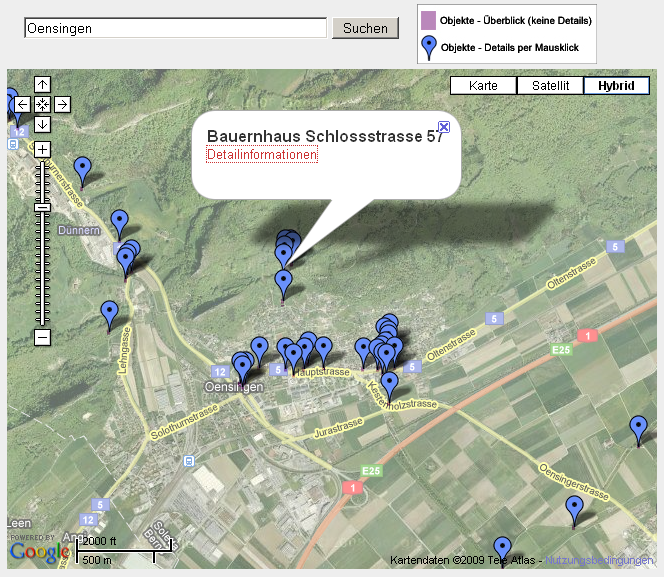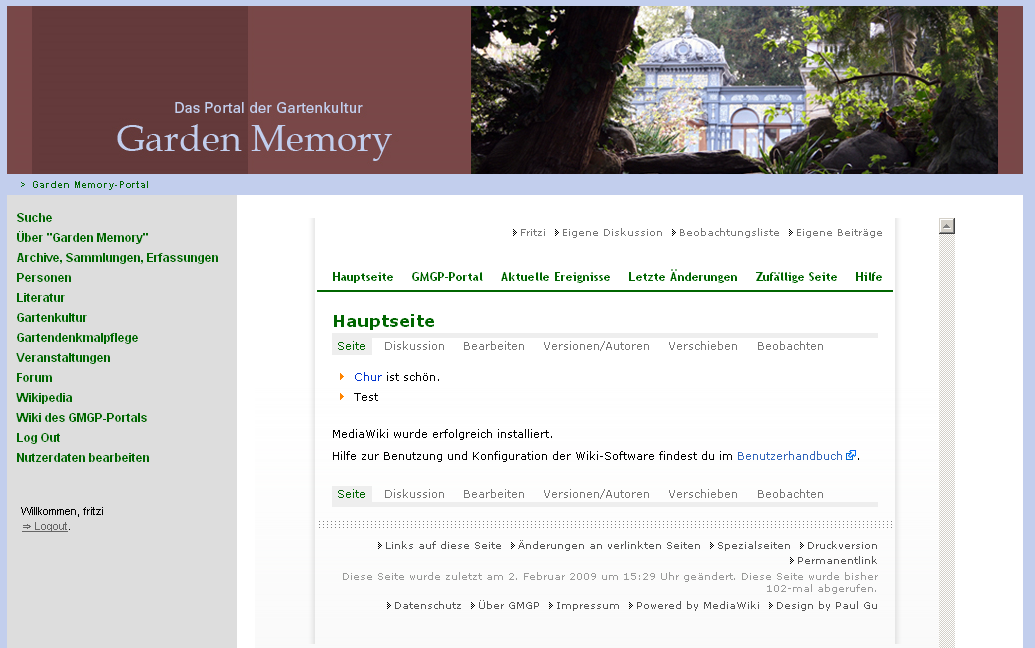Information Management¶
Paul Klee, "Ad Parnassum", 1932Institutional repositories - Swiss campus web services (Survey)¶
Applied methods & measures
UX research methods: quantitative methods, survey (online-based)
Methods for analyzing data: competitor analysis, quantitative methods,
Communicating findings using: presentations, written reports
Goal: The overarching aim of the project was to develop a technological and organizational Service-Oriented Architecture for administrating publications and researcher profiles for Swiss universities. Part of the project was to understand current and planned initiatives for archiving digital data for all Swiss universities.
Approach: An online survey on the state-of-the-art of institutional repositories in Switzerland was administered, evaluated, and the findings were summarized. This served as one pillar for identifying requirements for the envisioned SCWS platform. 80 responses were collected.
Role of Joachim Pfister: Survey design, survey administration using online survey tools, data analysis, summarizing the findings for the project partners, and writing a conference publication. Moreover, project management tasks were carried out by Dr. Pfister, such as assisting the primary investigator in setting up a project plan, controlling the budget, identifying dependencies with other work packages, and assisting the PI in writing a successful research grant to fund this project.
UX research challenges successfully addressed
- Elaborated a state-of-the-art report on institutional repositories in Switzerland.
- Identifying potential study participants and motivating them (cold acquisition) to participate in the survey (with a very good return ratio of 49%).
Pfister, Joachim; Weinhold, Thomas; Zimmermann, Hans-Dieter (2009): Open Access in der Schweiz. Status quo und geplante Aktivitäten im Bereich von Institutional Repositories bei Hochschul- und Forschungseinrichtungen. In: Kuhlen, Rainer: Information: Droge, Ware oder Commons? Wertschöpfungs- und Transformationsprozesse auf den Informationsmärkten. Elftes Internationales Symposium für Informationswissenschaft, March 01-03, 2009. Constance, Germany. pp. 259-270. (final draft availabe online)
Abstract DE of:
Open Access in der Schweiz. Status quo und geplante Aktivitäten im Bereich von Institutional Repositories bei Hochschul- und Forschungseinrichtungen
Klassische Publikationsmodelle für wissenschaftliche Fachinformationen werden zunehmend durch unterschiedliche Formen des digitalen Publizierens ergänzt bzw. teilweise verdrängt. Vor dem Hintergrund dieser Entwicklung ist insbesondere die Idee des Open Access von grosser Bedeutung. Dieser Beitrag liefert einen Überblick über den aktuellen Stand und geplante Aktivitäten im Bereich von Institutional Repositories bei Hochschul- und Forschungseinrichtungen in der Schweiz.
Abstract EN of:
Open Access in Switzerland. Status quo und Planned Activities for Institutional Repositories for Universities and Research Institutions
Established and conventional publication models for academic publications are continuously augmented or partly replaced by various forms of digital publishing. Based on this background, the Open Access concept is very important. This article provides an overview about current and planned activities for institutional repositories for Swiss universities and research institutions.
Needs-analysis for a data repository for the Swiss academy of humanities and social sciences (Survey)¶
Applied methods & measures
UX research methods: quantitative methods, survey (online-based)
Methods for analyzing data: quantitative methods, descriptive statistics
Communicating findings using: presentations, written reports
Goal: The Swiss Academy of Humanities and Social Sciences (SAGW) commissioned a report to identify research institutions' needs to establish a digital repository for the long-term archiving of research data for the humanities.
Approach: An online survey was iteratively developed and administered in German and French to an audience of 471 researchers of whom 32% responded.
Role of Joachim Pfister:
Elaborating the questionnaire, setting up the online survey infrastructure, data analysis, writing the final report (downloaded version from the old SAGW homepage)
UX research challenges successfully addressed
- Setting up a multi-lingual (German and French) online-based survey.
- Setting up the survey with additional tools so that self-identified experts from the organizations could participate with an individualized id - which was not supported initially by the online survey software.
Zimmermann, Hans-Dieter und Pfister, Joachim (2008): Auswertung der Umfrage Bedarfsanalyse für ein Angebot "Digitale langzeitarchivierung" in den Geistenswissenschaften (data repository). Hochschule für Technik und Wirtschaft HTW Chur, Chur. Schweizerisches Institut für Informationswissenschaft. Final report (downloaded version from the old SAGW homepage), it was formerly accessible on the SAGW homepage.
The study is now offline but it was (cited by Hügi and Schneider (2013): Digitale Forschungsinfrastrukturen für die Geistes- und Geschichtswissenschaften).
HTW CORE (Chur Online REpository)¶
Applied methods & measures
UX research methods: qualitative interviews, semi-structured interview guides
Methods for analyzing data: competitive analysis
Communicating findings using: presentations, written reports, project proposals
Goal: Organizational and technological implementation of an institutional repository (long term archive) for publications and student theses of the University of Applied Sciences, HTW Chur.
Approach: Interviews with all stakeholders involved (library, IT services, department representatives) were performed before an initial project vision for HTW CORE was developed. This vision was discussed in a workshop and refined as a project plan with a budget to be decided upon by the University's management. Furthermore, an extensive evaluation of existing software tools for institutional repositories (such as dspace, eprints, Fedora, OPUS) was carried out in order to identify suitable solutions and/or dis-/advantages of them with respect to the identified requirements.
Role of Joachim Pfister: Developed the project plan, carried out the stakeholder interviews and the requirement elicitation, refinement of the project vision and planning a budget to be submitted to the University's management for decision. Further project management activities included assisting the primary investigator in controlling tasks (budget and time), and assisting in writing a grant proposal for the project itself.
UX research challenges successfully addressed
- In-depth market research for existing software solutions for institutional repositories.
- Gathering business requirements from various inter-organizational stakeholders (departments, organizational units)
- Developing a refined project vision an plan to be submitted as a project proposal to the University's management.
Pfister, Joachim; Zimmermann, Hans-Dieter (2008): Towards the introduction of an institutional repository: Basic principles and concepts. In: Proceedings of BOBCATSSS 2008 – Providing Access to Information for Everyone. January 28-30, 2008. Zadar, Croatia. pp. 285-293. DOI: 10.18452/1310.
Abstract of: Towards the introduction of an institutional repository: Basic principles and concepts
In this article the principles and benefits of open access are described which can be achieved with the help of institutional repositories. The advantages of a repository are depicted as well as the spread throughout the European Union. The process of installing an institutional repository organizationally is shown as short report on the ongoing efforts at the Swiss Institute for Information Research in Chur. The approach to install a widely accepted repository for the University of Applied Sciences Chur and its difficulties are portrayed as well as the process and methods chosen for the evaluation of the candidate software packages.
Garden Memory Goes Public¶
Applied methods & measures
UX research methods: interviews, requirements engineering with internal and external project partners
Communicating Findings Using: presentations, written reports
Aim: This project aimed at developing an ontology-based information portal that integrates heterogeneous data sources.
Role of Joachim Pfister: 1. Evaluation of different automatic ontology-learning tools and their fit with data available in German language. 2. Developed a GIS-based visualization of points of interest using a dedicated web map server. 3. Collaborating with internal and external project partners to define, specify, and implement functionalities of the GMGP portal using Web services.
Visualizations & images



Öttl, Sonja; Pfister, Joachim; Stettler, Niklaus; Studer, Martin; Wenk, Bruno (2008): Garden Memory Goes Public: ein ontologiebasiertes Informationssystem zur Gartendenkmalpflege. In: Ockenfeld, Marlies (Eds.): Proceedings der 30. DGI Online-Tagung. October 15-17, 2008. Frankfurt on the Main, Germany. pp. 247-257.

